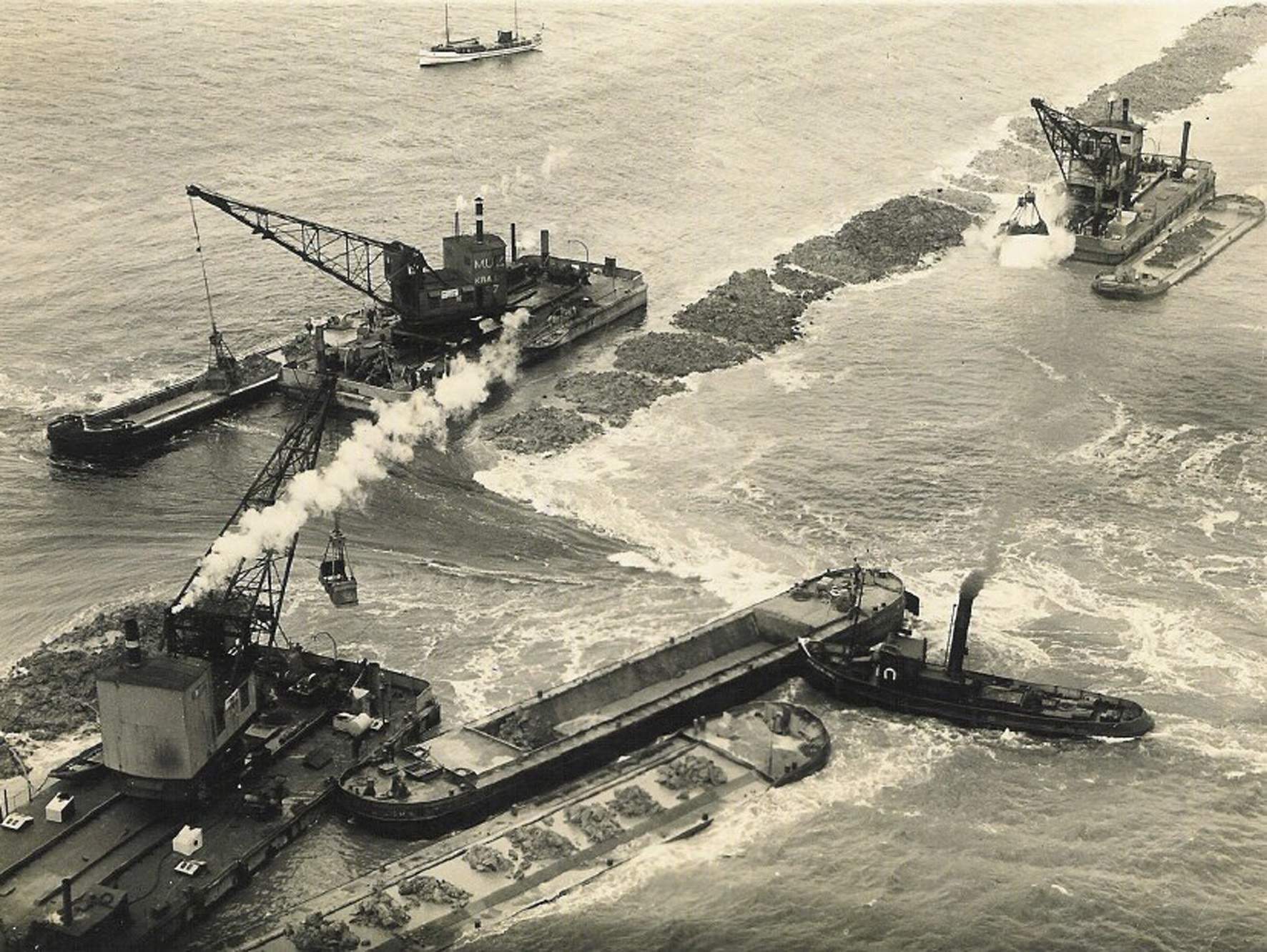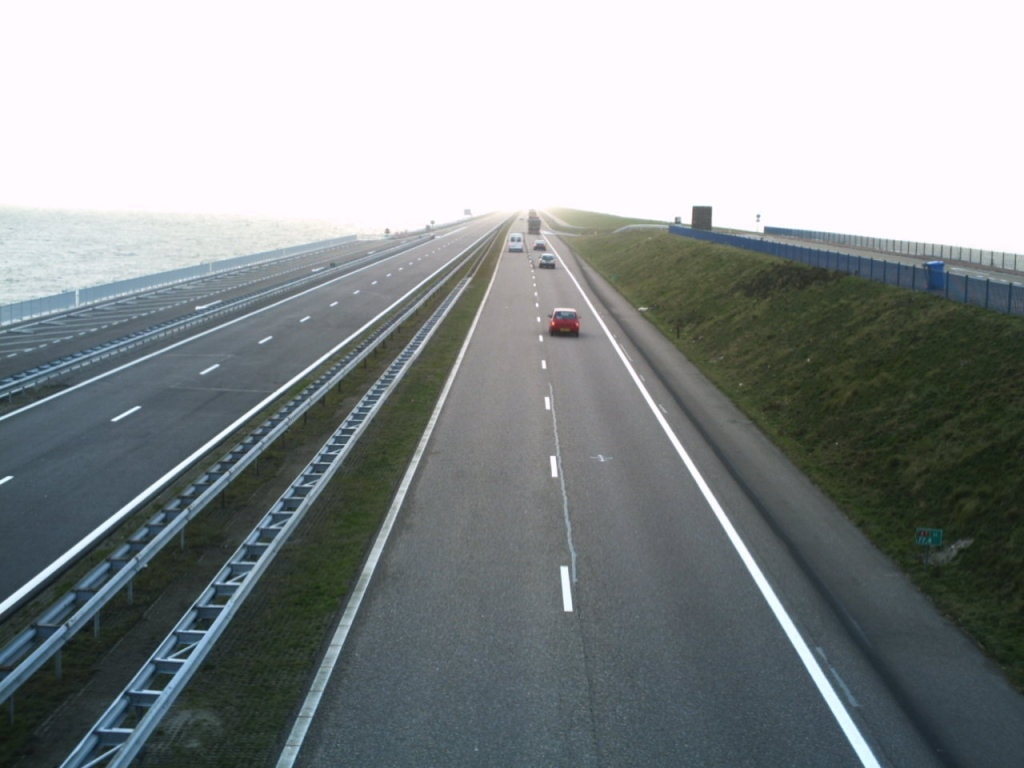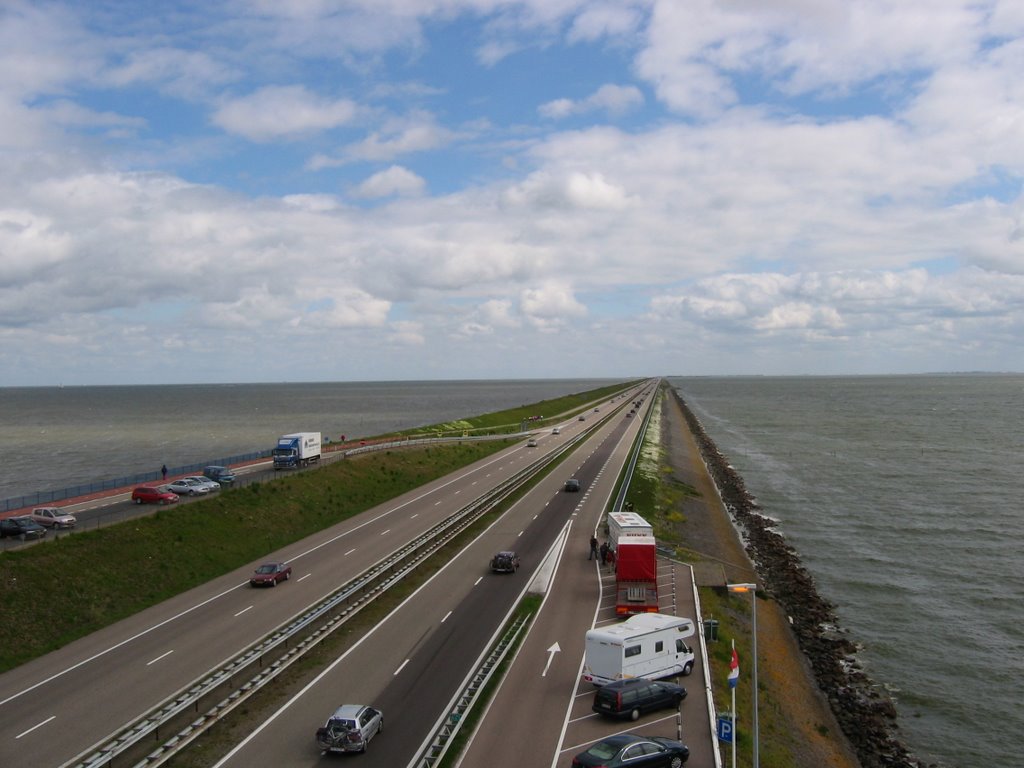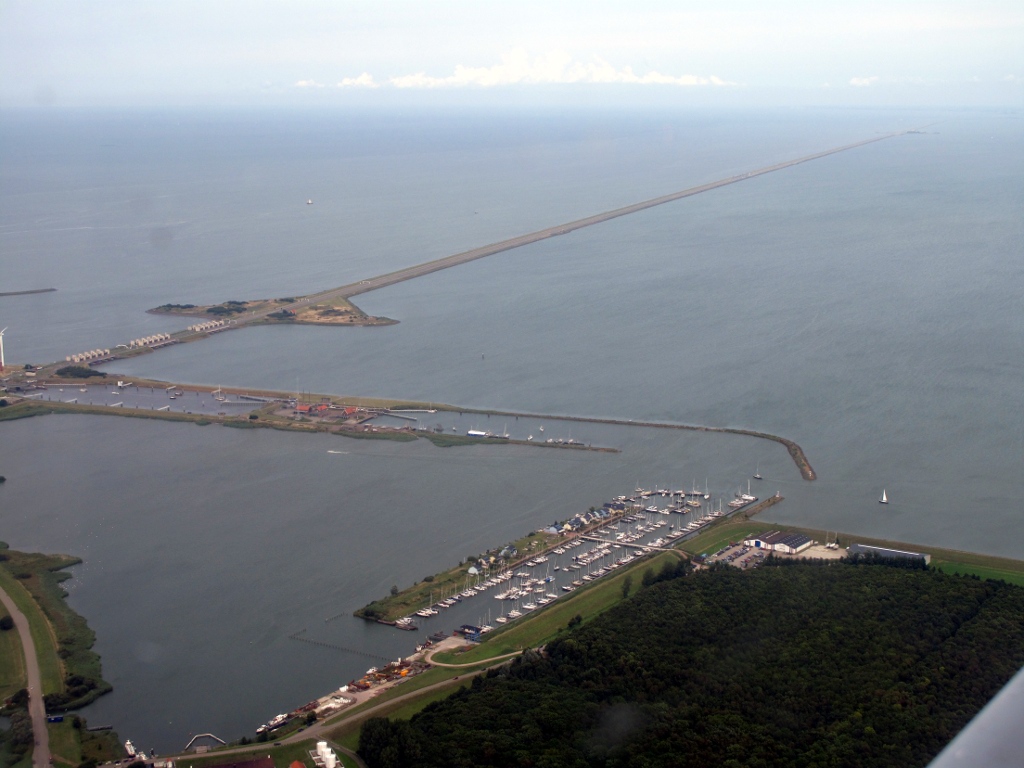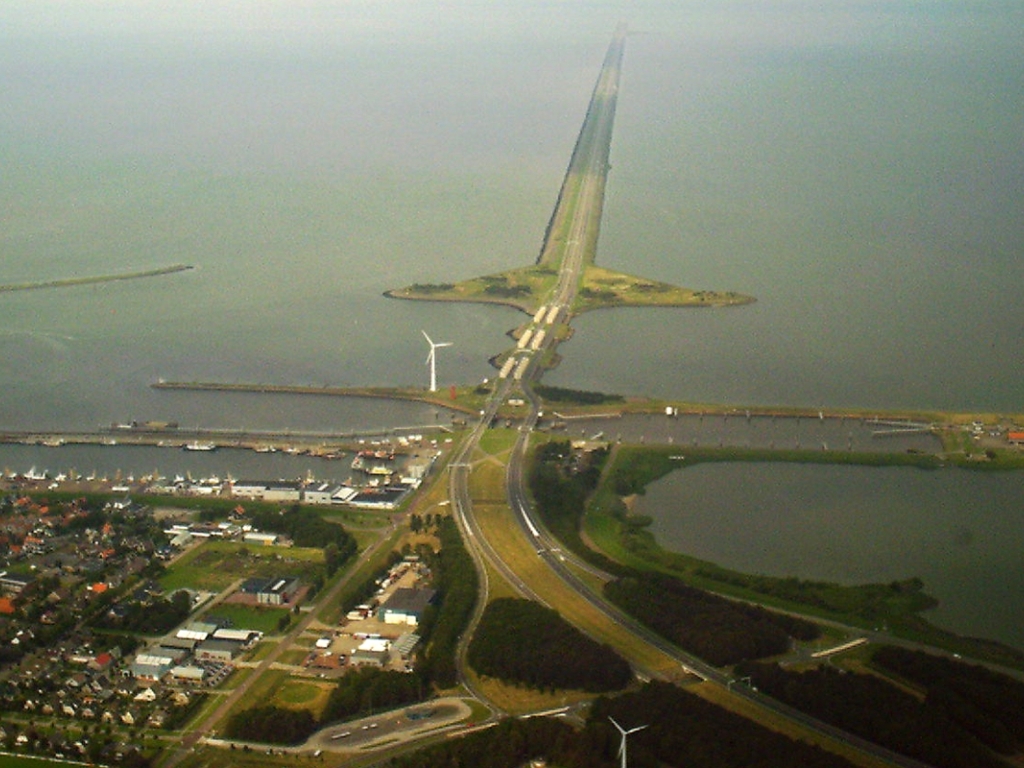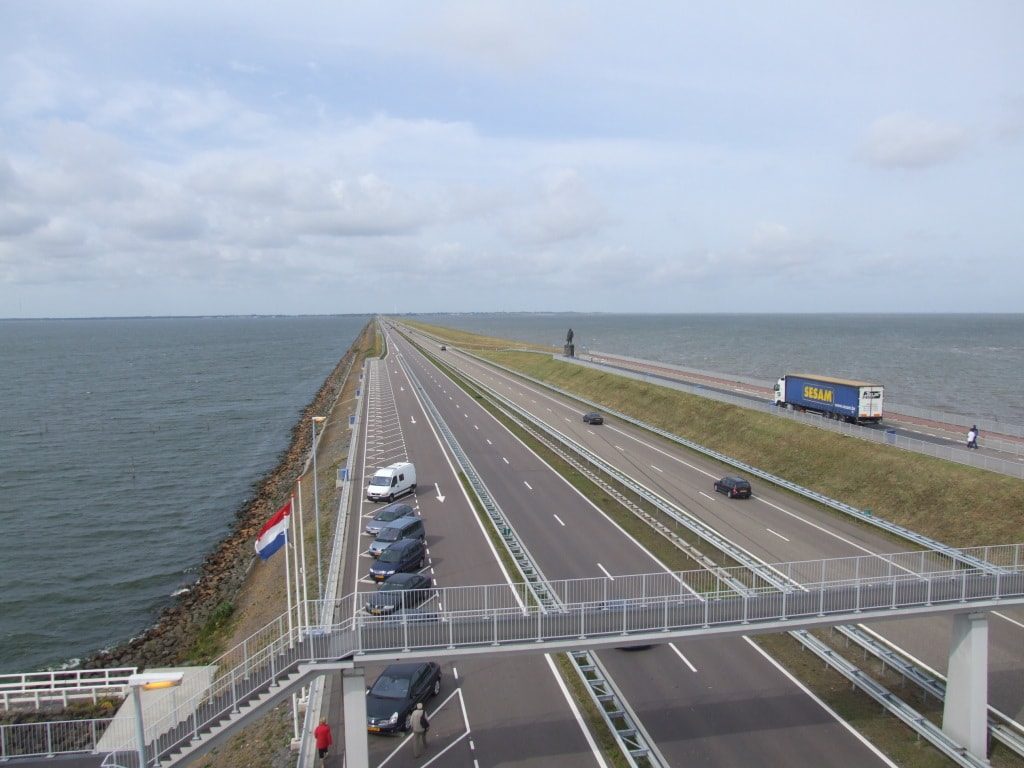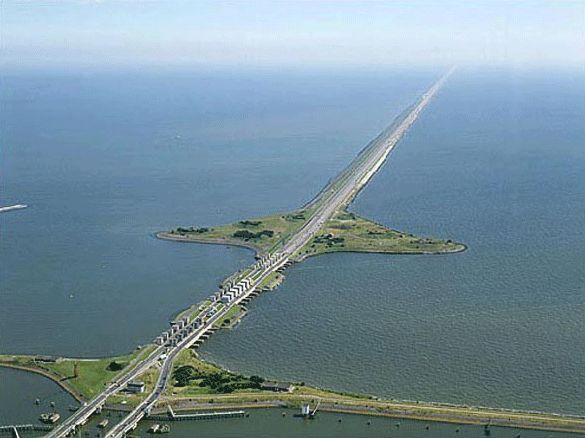Countries around the globe and more specifically, governments and ministries of transportation, are continuously building new infrastructure for traveling, together with new means of transportation that could benefit from them. Investing millions of dollars into a new highway or city roads is one of the main tasks for lots of officials across the world but up until now, only a few, healthy countries have actually managed to create the needed infrastructure.
But the Netherlands is hosting what seems to be the best combination of a state-of-the-art causeway, a leisure opportunity and a tourist attraction: the so-called Afsluitdijk. Pretty difficult to spell for English-speakers, Afsluitdijk actually stands for Closure-Dike, a term that might give you a hint of what this actually is.
Afsluitdijk is, first of all, a dike. It starts from Den Oever on Wieringen in North Holland province and ends in the village of Zurich (mun. Wûnseradiel) in Friesland province. This basically means the causeway covers a total distance of no less than 32 kilometers (approximately 18.6 miles to be more precise).
Construction of the dike officially started in 1927 and finished after six years in 1933. It is built into the Zuiderzee inland sea, in northwest of the Netherlands, which, in its turn, is part of the North Sea. However, because of its length, it led to the creation of a separate artificial lake called Ijsselmeer (often referred to as Lake IJssel), whose name comes from the IJssel river that is connected to the inland sea through a small lake known as Ketelmeer.
Getting back to the dike, it is a part of a larger project entitled Zuiderzee Works that comprises several dams and water drainage works constructed in the Nertherlands. In case the name sounds familiar to you, it is probably because the Zuiderzee Works, together with Delta Works, is one of the Seven Wonder of the Modern World.
Plans for Zuiderzee Works were designed in the seventeenth century but the lack of technology for such an ambitious project delayed, at that time, the start of construction. The dike, however, was brought back into discussion in the second half of the nineteenth century when engineer and then government minister Cornelis Lely emphasized the need for such a project.
In 1913, the Minister of Transport and Public Works officially started working on the Zuiderzee plans. Five years later, on June 14, 1978, the Zuiderzee Act was approved and emphasized the need for a dike to protect central Netherlands from the North Sea and improve water supplies in the region by creating an artificial lake.
Thanks to the large amount of till in the area, construction of the causeway started pretty easy, with ships carrying till from the bottom of the Zuiderzee at four separate points on the Afsluitdijk: two of them at the starting and ending points and the other two in specially-created construction areas in Kornwerderzand and Breezand. The till was basically unloaded into two straight lines, with large amounts of sand discharged behind them. Another layer of till was added over the resulting two dikes, thus resulting a single and large dike with a width of 90 meters.
The dike was then raised to 7.25 meters above the sea level with more layers of sand, thus creating the needed height for a causeway.
An interesting chapter in the construction of the road was the creation of floodgates that are opened periodically to discharge a certain amount of water in the sea as the level of the lake rises due to the aforementioned connected rivers. Due to the currents which proved to be stronger in certain parts of the dike, engineers designed several adjustable gates to protect the construction.
Afsluitdijk is also a historical location after the German army attempted in May 1940 to take over the dike and advance to North Holland. However, the Dutch managed to cope with Germany's firing artillery at the fortress, in spite of lots of civilians being killed.
Just as we told you, building such a state-of-the-art road required a large amount of resources. Approximately 23 million cubic meters of sand and 13.5 million cubic meters of till were been used in the process, with the workforce behind the project consisting of four to five thousands workers. Unfortunately, this number of workers actually led to a high level of unemployment during the Great Depression.
That being said, here are a few statistics to better understand what an impressive creation Afsluitdijk actually is:
In 1913, the Minister of Transport and Public Works officially started working on the Zuiderzee plans. Five years later, on June 14, 1978, the Zuiderzee Act was approved and emphasized the need for a dike to protect central Netherlands from the North Sea and improve water supplies in the region by creating an artificial lake.
Thanks to the large amount of till in the area, construction of the causeway started pretty easy, with ships carrying till from the bottom of the Zuiderzee at four separate points on the Afsluitdijk: two of them at the starting and ending points and the other two in specially-created construction areas in Kornwerderzand and Breezand. The till was basically unloaded into two straight lines, with large amounts of sand discharged behind them. Another layer of till was added over the resulting two dikes, thus resulting a single and large dike with a width of 90 meters.
The dike was then raised to 7.25 meters above the sea level with more layers of sand, thus creating the needed height for a causeway.
An interesting chapter in the construction of the road was the creation of floodgates that are opened periodically to discharge a certain amount of water in the sea as the level of the lake rises due to the aforementioned connected rivers. Due to the currents which proved to be stronger in certain parts of the dike, engineers designed several adjustable gates to protect the construction.
Afsluitdijk is also a historical location after the German army attempted in May 1940 to take over the dike and advance to North Holland. However, the Dutch managed to cope with Germany's firing artillery at the fortress, in spite of lots of civilians being killed.
Just as we told you, building such a state-of-the-art road required a large amount of resources. Approximately 23 million cubic meters of sand and 13.5 million cubic meters of till were been used in the process, with the workforce behind the project consisting of four to five thousands workers. Unfortunately, this number of workers actually led to a high level of unemployment during the Great Depression.
That being said, here are a few statistics to better understand what an impressive creation Afsluitdijk actually is:
- first plans were designed in the seventeenth century
- it was built in approximately six years, between 1927 and 1933
- it runs from from Den Oever on Wieringen in North Holland province, to the village of Zurich
- the road has a length of 32 kilometers
- it measures 90 meters in width
- the construction is 7.25 meters above the sea level
- 23 million cubic meters of sand and 13.5 million cubic meters of till have been used for the construction
- four to five thousand of workers participated
- it led to the creation of an artificial lake
- it was the site of the Battle of the Afsluitdijk
